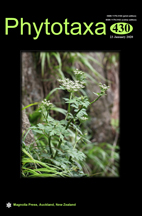Abstract
Three close endemic species of Psephellus section Odontolophoidei were compared with regard to their micro- and macromorphological characters to explore their taxonomic circumscription and relationships. In the scope of detailed morphologic studies, the deficiences found in the species descriptions in Flora of Turkey were corrected. Detailed descriptions and a useful key were prepared in light of newly obtained morphologic data. During the numerical studies, 96 qualitative and quantitative characters were converted into numerical values. The obtained data and their matrices were used in the phenetic analyses. Following this process, a phenogram was created based on the similarity index, and the spatial distributions of the taxa were assessed using nMDS (non-metric multidimensional scaling). The findings indicated that the microstructural features of the achenes observed using scanning electron and light microscopy are very important for the classification of Psephellus, and they can be used as effective taxonomical tools to determine the relationships of closely related taxa. As a result of these studies, Psephellus aucherianus could be characterized as the most variable and relatively common species when compared to the remaining relatives within the section. Psephellus yusufeliensis was found near Ps. aucherianus and it had a fairly local and narrow distribution. In light of the micromorphological data and phenetic analyses, Psephellus sintenisii is accepted at species rank as a new combination for Flora of Turkey. Morphological descriptions and nomenclatural types are indicated for all accepted taxa, including designation of a lectotype for Ps. sintenisii. Data on phenology, ecology, and distribution are also reported.

